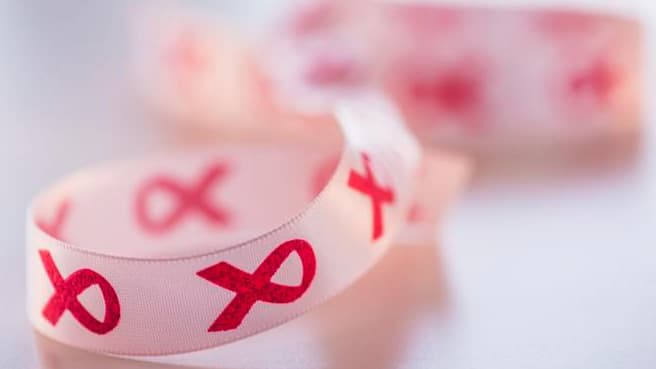Table of Contents
In a report published Monday, November 18, the organization regrets that the Pink October campaigns did not result in “any increase in the number of screening mammograms” for breast cancer.
Access to cancer care “remains unequal across the country” for adults, underlines the National Academy of Medicine in a 26 page report made public on Monday, November 18, where she made a series of proposals to try to remedy this.
Cancers remain the leading cause of premature mortality in France among men, the second among women, and their frequency has doubled in around thirty years, with more than 433,000 new cases in mainland France in 2023.
The Academy judges that “the current state of diagnostic and therapeutic care does not seem homogeneous across the territory, as does access to innovative practices”.
And this, “despite considerable advances in the field of treatments (robotic surgery, high-precision radiotherapy, targeted medical treatments and immunotherapy, supportive care, etc.) and diagnosis (molecular and genetic pathology)”.
A “Pink October” campaign without much effect
“These inequalities in access have perhaps increased in recent post-Covid years, due to the economic and human resources difficulties encountered in community medicine and hospitals,” add the authors of the report.
Despite a very structured organization of oncology, there remain difficulties and territorial inequalities “throughout the care pathway”, warns the Academy of Medicine.
Prevention policies are thus judged to be “too general, insufficiently funded, poorly evaluated and of little concern to populations at risk for economic or socio-cultural reasons”.
The famous “Pink October”, for breast cancer screening, is criticized for not having led to “no increase in the number of screening mammograms”.
“No doubt it would have been preferable to carry out a precise assessment of this mobilization and to better identify unscreened women to raise their awareness,” according to the report.
A series of recommendations
The Academy of Medicine therefore recommends “precise targeting and evaluation of prevention policies” for cancer, but also “an active prevention policy” for patients who are cured but at high risk of complications and early death thereafter.
While the genomic characteristics of tumors are “indispensable”, the report also pleads for “maximum interaction” between two categories of analysts, anatomopathologists and molecular biologists. It also intends to replace molecular tests on a single gene with tests on groups of genes in order to avoid a “loss of chance” for patients.
The Academy also defends “a homogenization of prices between public and private actors, and not weakening locoregional cancer treatments”, which act directly on the tumor or on the region of the tumor.
Finally, she urges a policy to encourage careers in oncology because, otherwise, the shortage of caregivers could increase inequities of access, or even mortality.
To comprehensive care, including timely screening and follow-up treatment, to improve overall outcomes.
As a website editor for world-today-news.com, I am pleased to present an exclusive interview with two esteemed guests in the field of oncology. Our first guest is Dr. Emmanuel Mignot, a well-known oncologist and researcher at a leading hospital in France, and our second guest is Dr. Isabelle Ropkoc, a public health expert at the World Health Organization.
In this interview, we’ll discuss the recent report published by the National Academy of Medicine regarding the inequalities in cancer care across France, the limitations of Pink October campaigns, and the importance of precision medicine in treating cancer.
Dr. Mignot, could you please share your insights on the report’s findings that access to cancer care remains unequal across the country for adults, and what are some of the key factors contributing to this inequality?
Dr. Mignot: Certainly. The report highlights several issues that contribute to these inequalities, such as uneven distribution of resources, variable quality of care, and socio-economic factors that impact the ability of individuals to access care. In addition, there are also significant differences in access to innovative treatments and diagnostic methods, which can significantly impact outcomes for patients. One of the more alarming findings is that despite advancements in care, survival rates have not improved significantly in some regions of the country. This underscores the urgent need for targeted interventions to ensure all patients have access to the same level of care.
The report suggests that prevention policies, including the Pink October campaign, have been insufficiently funded and evaluated. Dr. Ropkoc, from the World Health Organization, could you please offer your perspective on the effectiveness of these campaigns and how they might be improved in the future?
Dr. Ropkoc: Absolutely. The Pink October campaigns are certainly well-intentioned, but they do not seem to have had the desired impact on increasing screening rates or reducing breast cancer mortality. This highlights the importance of evaluating the effectiveness of prevention campaigns and making data-driven decisions about how to allocate resources. One potential approach could be to focus on tailored prevention strategies that target specific populations at higher risk. Additionally, we must ensure that patients have access


